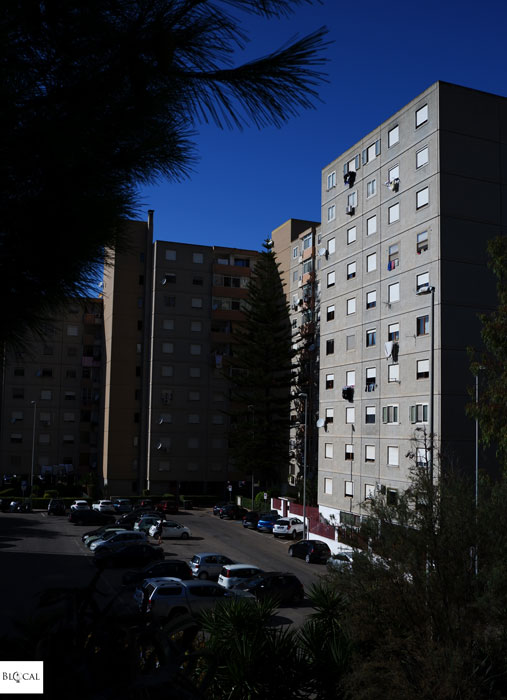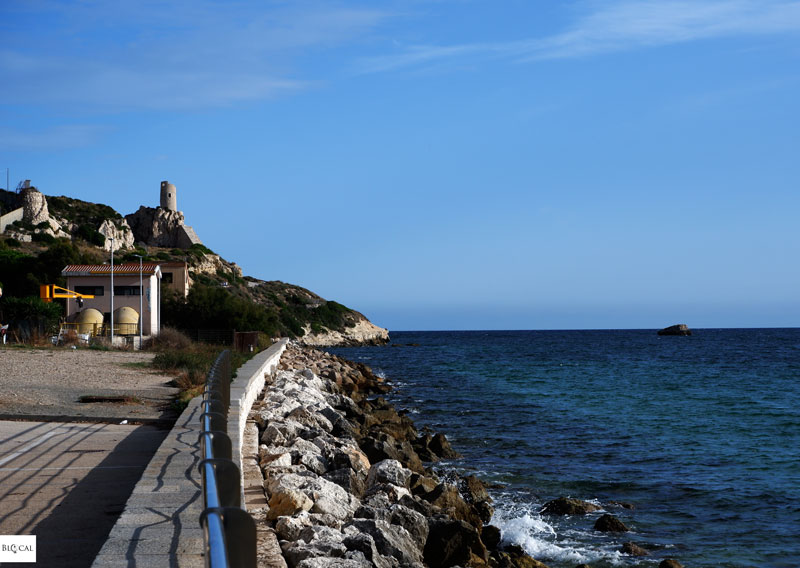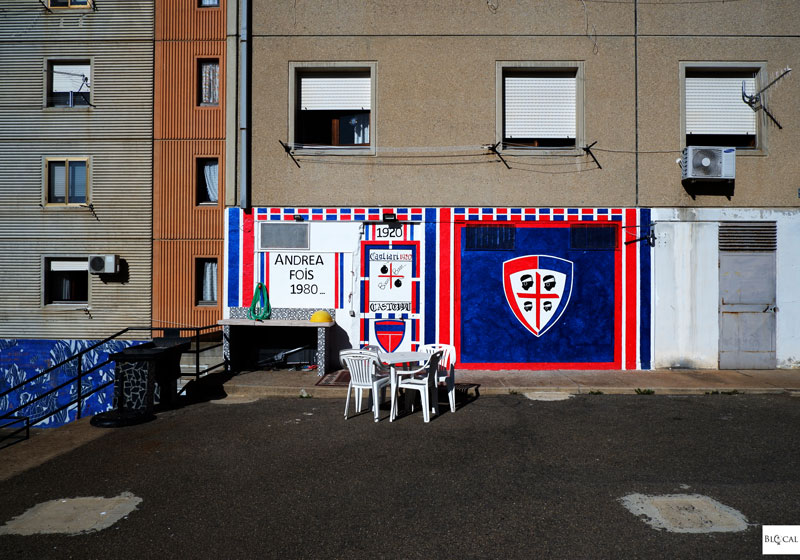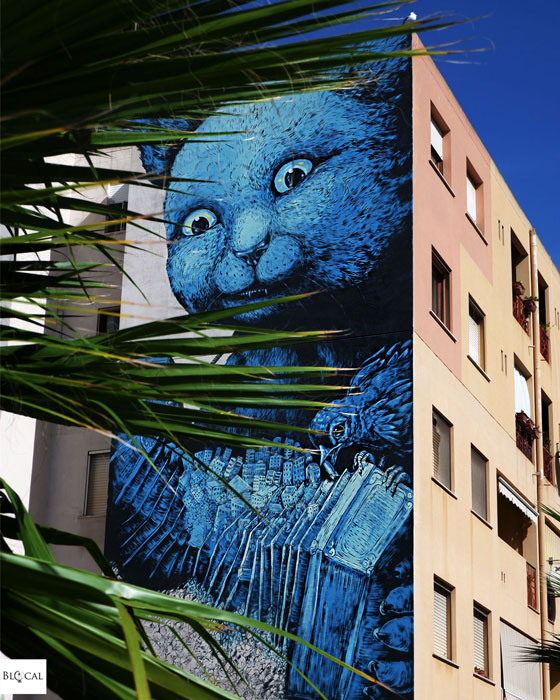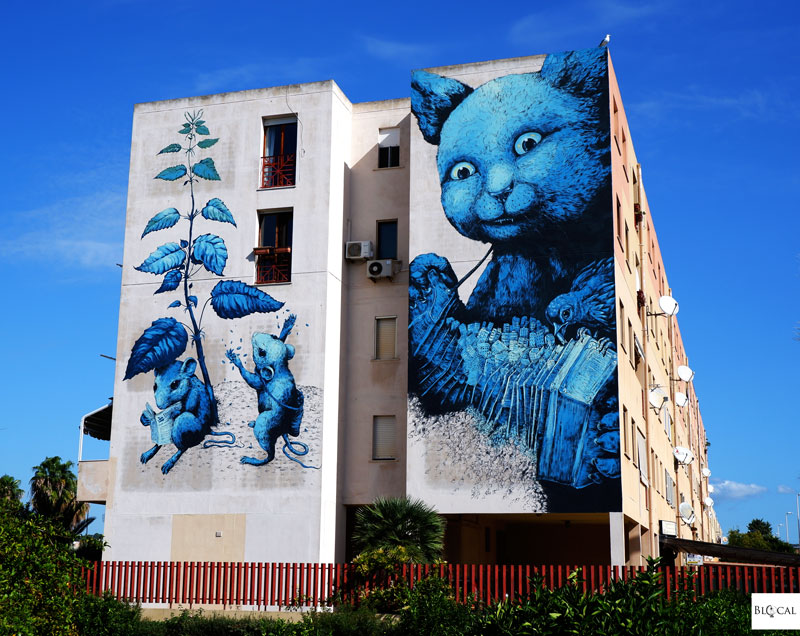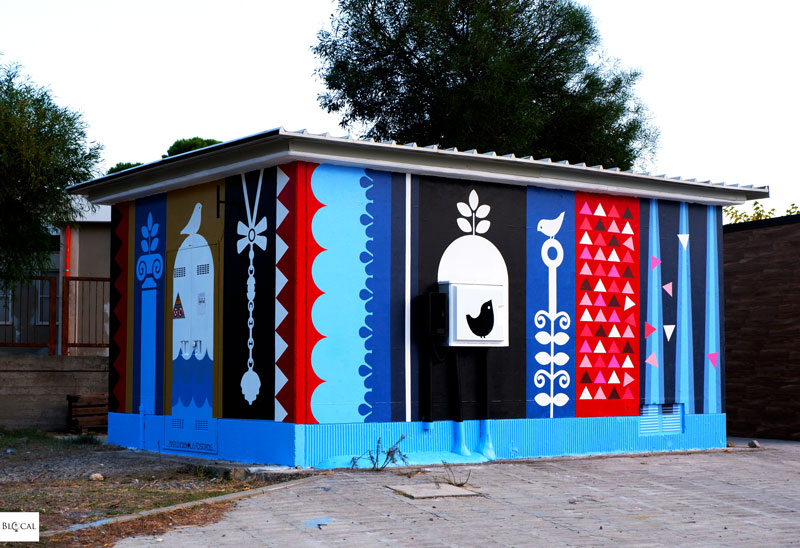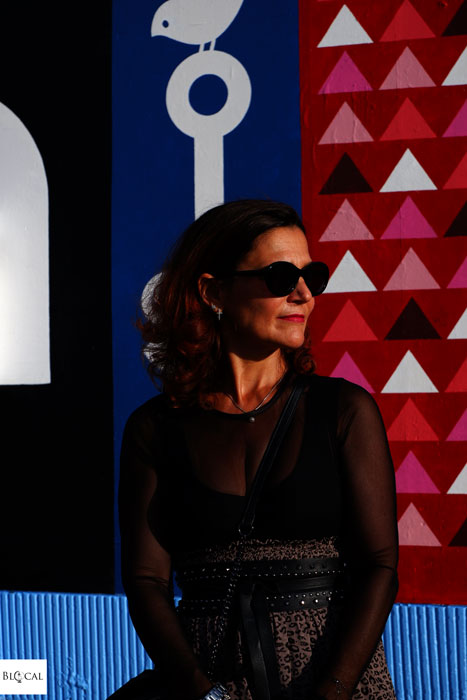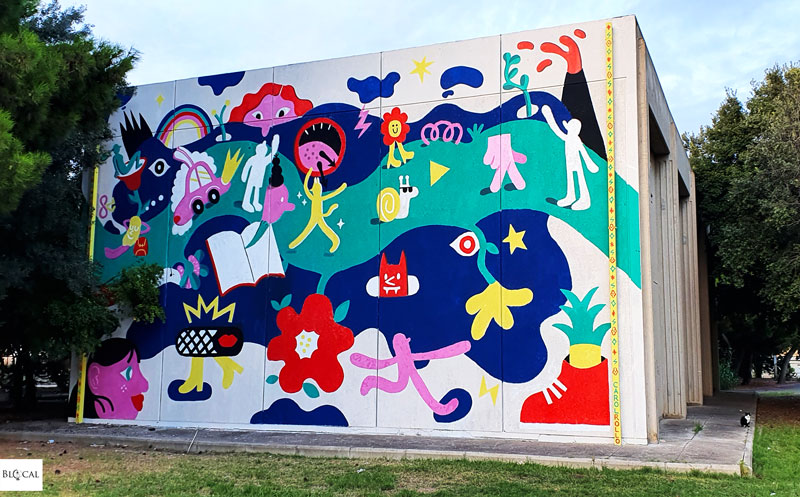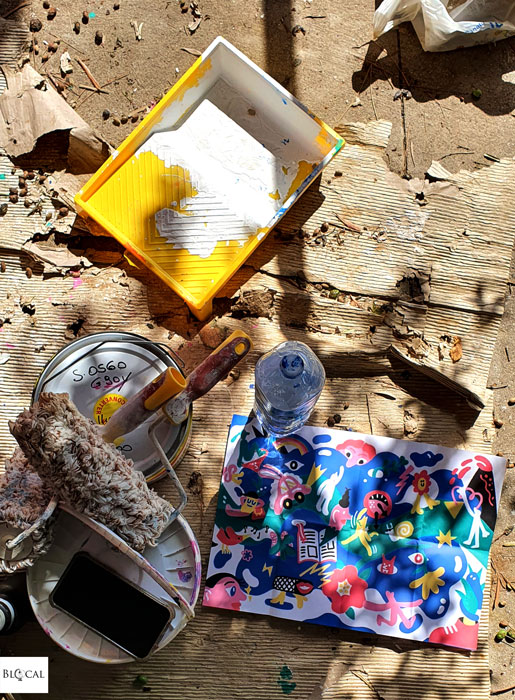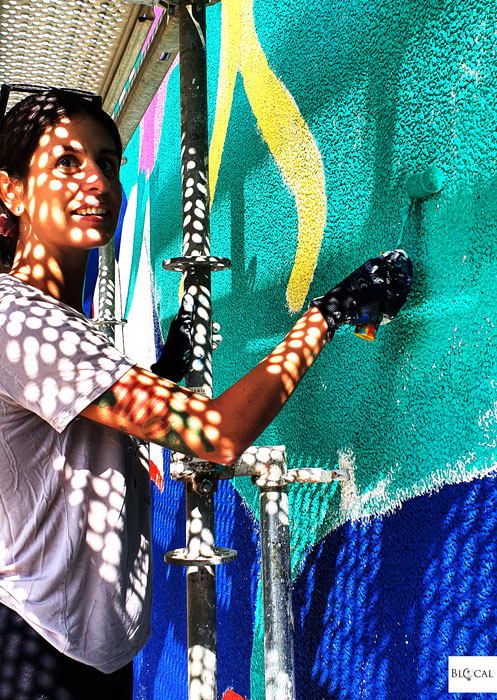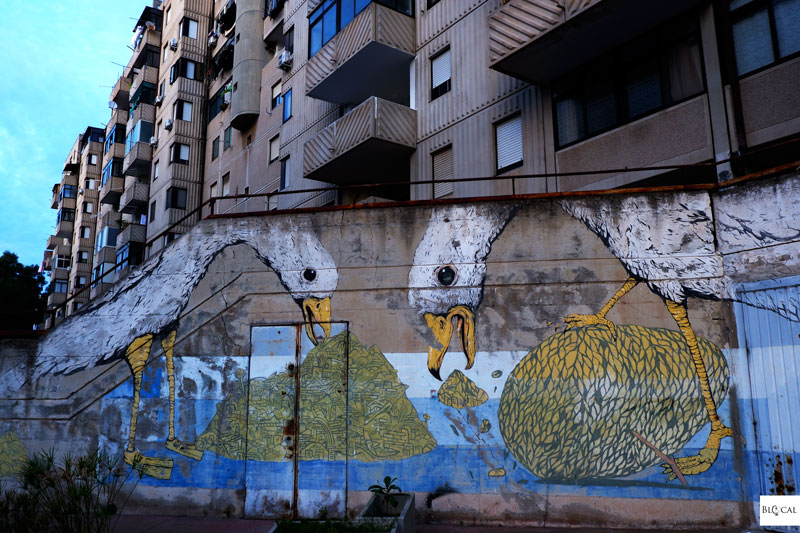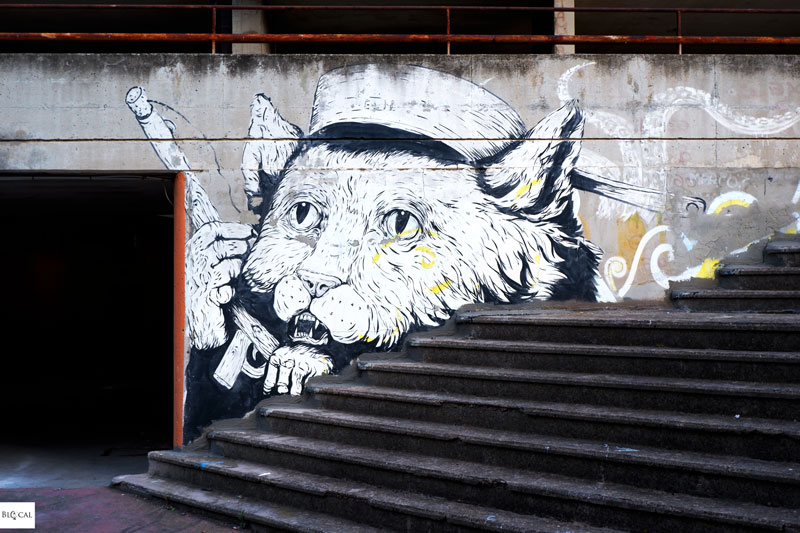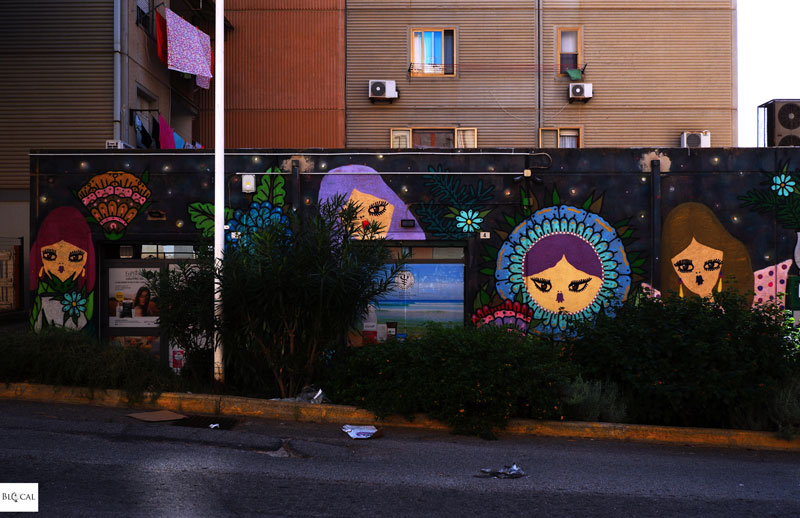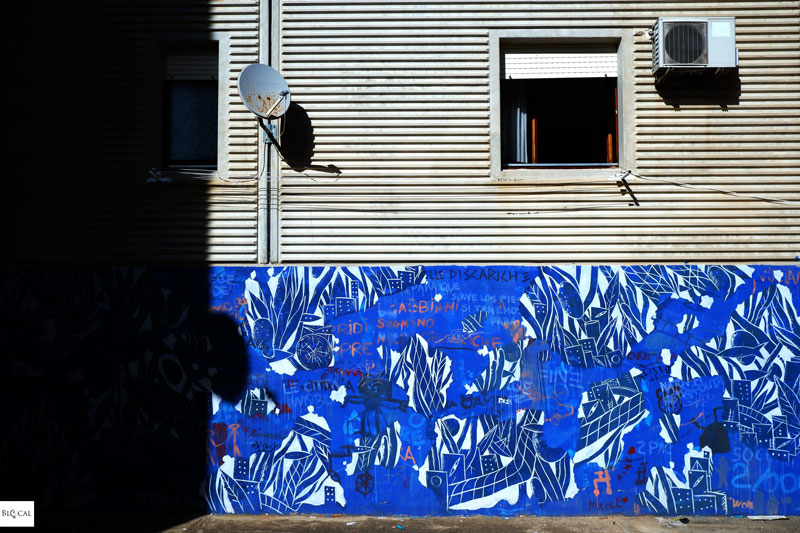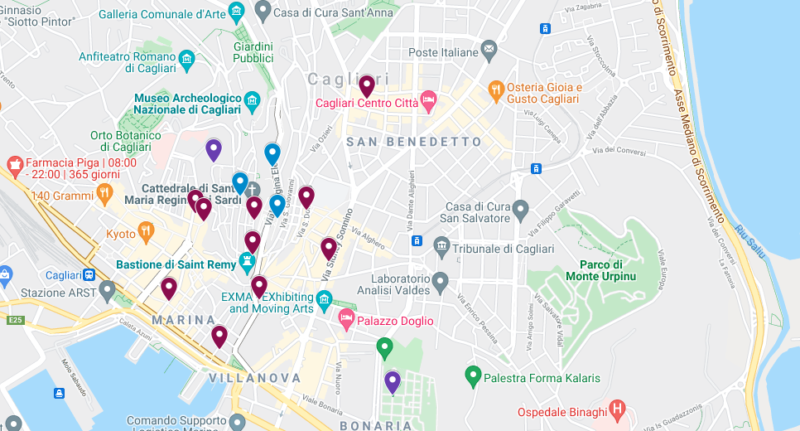As a media partner of the urban art festival Cagliari Urbanfest in October 2022, I came back to Sardinia to document the first edition of the festival and talk about this blog on an expert panel at the festival’s street art symposium. Organized by Asteras (the cultural association behind the excellent travel guide “Muri di Sardegna”), the festival took place in Sant’Elia, a neglected neighborhood directly on the sea.
From July to October 2022, Cagliari Urbanfest organized a series of cultural activities in the fields of street art and visual art to highlight the inherent beauty of the Sant’Elia neighborhood, whose social and economic conditions led it to be considered the city’s ghetto.
Sant’Elia, home of the first ever Cagliari Urbanfest
The oldest part of the neighborhood (Borgo Sant’Elia) rises on a hill overlooking the sea. It has been traditionally inhabited by fishermen, but during WW2, the military took it over and now civilians are relegated to the area between the hill and the sea, inside huge concrete buildings built in the 1980s.
Despite its beautiful location, this social housing district is considered a ghetto, both for its economic, social, and cultural conditions and for its marginal position (the day I decided to walk to the walls from the city center, it took me almost two hours).
The hope is that Sant’Elia, in spite of its marginalized position, could one day promote its own centrality thanks to the cultural ferment sparked by activities such as Cagliari Urbanfest. This transformation will be possible thanks to art created in, and for, the public space (as opposed to self-referential art created in a studio), which can boast a social change based on the relationship between the artwork and the people who see it everyday.
The Murals of Cagliari Urbanfest
The three street artists chosen by Asteras for the first edition of Cagliari Urbanfest are known for their strong social mission. They weren’t called to decorate a gray wall but the aesthetic trace they left on Via Schiavazzi is the outcome of a process carried on with, and within, the local community – each artist with their own working method. The result is that now residents feel the first three public artworks of the festival as their own.
This sense of ownership wouldn’t be possible without three artists that were able to put their ego aside and share their process with the community, thus becoming stimulators of good practices (as opposed to self-referential decorators).
The ultimate example of an artist who has never put his persona before the art is Ericailcane. Painting anonymously since the early 2000s, Ericailcane never steals the attention from his artworks; he prefers to let the image speak, often leaving his murals untitled.
Ericailcane for Cagliari Urbanfest
The artistic and social activities held by Asteras in the streets of Sant’Elia began in July 2022, when Italian street artist Ericailcane completed a stunning mural to celebrate the circle of life, which regenerates and evolves despite man-made disasters.
I’ve always admired Ericailcane’s hand-drawn, highly detailed animals, which have zoomorphic features to address human issues – as in the best tradition of children’s literature.
The architecture of the wall is that of a diptych; on the right, the artist painted a cat playing the Sardinian accordion, while on the left side are two mice reading “Umanità Nova,” a local newspaper of anarchist origins.
Within the accordion, we see a crumbling city destroyed by man-made disasters. These include climate change (environmental issues are particularly heartfelt by Ericailcane), but also the war represented by a missile carried by a bird; a character that wasn’t in the original sketch but was added along the way as a political commentary on the recent news.
On the left side of the artwork, two mice are peacefully reading the newspaper; they aren’t afraid of the cat, because in Ericailcane’s fairy tale all animals live in harmony, among themselves and with the flora, like the nettles represented here – a plant with many beneficial properties, some of which we are no longer aware of since we lost connection with the natural world. I couldn’t help but notice that just in front of the mural is an urban garden where locals grow different fruits.
- Read also > Street Art in Sardinia: From Political Muralism to Contemporary Art (15 street art locations and counting)
Mara Damiani for Cagliari Urbanfest
The art of Mara Damiani is strongly influenced by Sardinia’s history, nature, and folklore. Wandering around the city, I spotted her graphic designs on concrete blocks scattered on Via Roma, and I was looking forward to seeing what she would create for the Cagliari Urbanfest with the help of art students.
Mara created a colorful design made of symbols recalling the characteristics of the Sant’Elia neighborhood as well as Cagliari’s history and the city plan. A group of 28 art students was then invited to paint this design side by side with the artist on an electrical control unit overlooking Ericailcane’s mural. Visibly eager to learn and put into practice what they have been studying in class, the students were very meticulous in coloring Mara Damiani’s design.
They were also very curious about the neighborhood (their art school is on the outskirts on the other side of town), and truly enjoyed mingling with residents at the local café, sharing insights into (and asking opinions on) the artwork they were collectively painting.
Carol Rollo for Cagliari Urbanfest
Meanwhile, at a nearby primary school, Sardinian street artist Carol Rollo painted a large-scale mural designed together with the young students. The artist elaborated on the design of the mural after three workshops with the school children on the themes of drawing and movement, more precisely the perception of the body within the space. Children danced, took photos of each other, and drew their bodies in movement on a long sheet of paper held on the wall of the school’s gym.
Painted in bright colors, the surreal characters on the wall are derived from the kids’ silhouettes, and I’ve spotted them looking for their bodies among the dynamic figures on the facade of their school.
The mural is the result of a process whose positive effects will benefit not only the kids, who will be proud of their surreal portraiture for years to come, but also their families and the whole community.
More Street Art in Cagliari’s Sant’Elia Neighborhood
Ericailcane already painted in Sant’Elia back in 2013, together with three Sardinian street artists that have since become appreciated worldwide: Crisa, Ciredz, and Tellas.
More street art in Sant’Elia can be found on (and in front of) the local pharmacy, which seldomly organizes painting jams with local street artists.
Cagliari Street Art Map
Explore Cagliari’s street art scene with my Cagliari Street Art Google Map, where you can also find my favorite restaurants and cafes, museums and art galleries, and more off-the-beaten-path spots to see in Cagliari, Sardinia.
Read also: Street Art in Cagliari and more alternative things to see in Cagliari, Sardinia
Cagliari Urbanfest: The Gallery Exhibitions and The Street Art Symposium
Two visual art exhibitions bridged the marginalized area of Sant’Elia with two historical neighborhoods in the city center, Stampace and Marina:
- “La Memoria dell’Acqua,” with artworks by Sardinian contemporary artists Matteo Campulla, Giulia Casula, Alessandro Lobino, Alberto Marci, and Sabrina Oppo;
- “Onde di Tempo,” solo show by Marilena Pitturru.
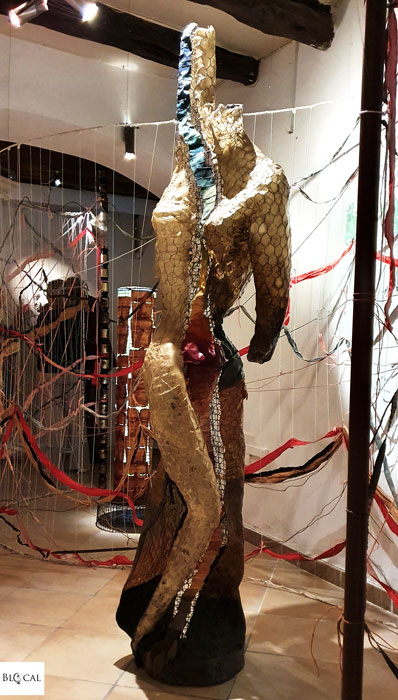
The Street Art Symposium
Part of Cagliari Urbanfest is also the panel of experts that took place on Friday, October 7th in the beautiful 17th-century “Lazzaretto” building, a former leper hospital turned cultural center.
Kicking off the panel, contemporary art professor Rita Pamela Ladogana introduced the highly debated theme of street art musealization, eventually suggesting, as a best practice, Rome’s MAAM Museum.
Her pupil, Gianluca Gaias, discussed the relationship between geography and urban art, and the development of a community VS a marketing operation exploiting urban art for less-noble intents.
Pietro Rivasi brought to the audience his piece de resistance: photography as the only legit way to showcase graffiti in a gallery or a museum setting. Afterward, Paola Iazurlo talked about conservation and restoration of art in the public space, with a focus on Sardinia’s old mural art tradition and how such artworks have been handled so far.
Next up was Ugo Bressanello, founder of the onlus Domus De Luna, which builds community homes and shelters where street art is used as a powerful social tool. Domus De Luna also pursues work inclusion through their restaurant “La Locanda dei Buoni e dei Cattivi”, where I had lunch earlier that day (find out more in my Cagliari Street Art Travel Guide).
Last, but not least, I talked about the work of documentation and communication of street art that I’ve been carrying on through this blog since 2011. I thought it would be nice to share this speech with you (who have been a huge part of this journey!) so I added English subtitles to the shaky video I recorded with my phone leaning precariously on the microphone stand. Hope you don’t mind the Blair Witch Project-style shot ;)
(English subtitles can be activated on youtube)
